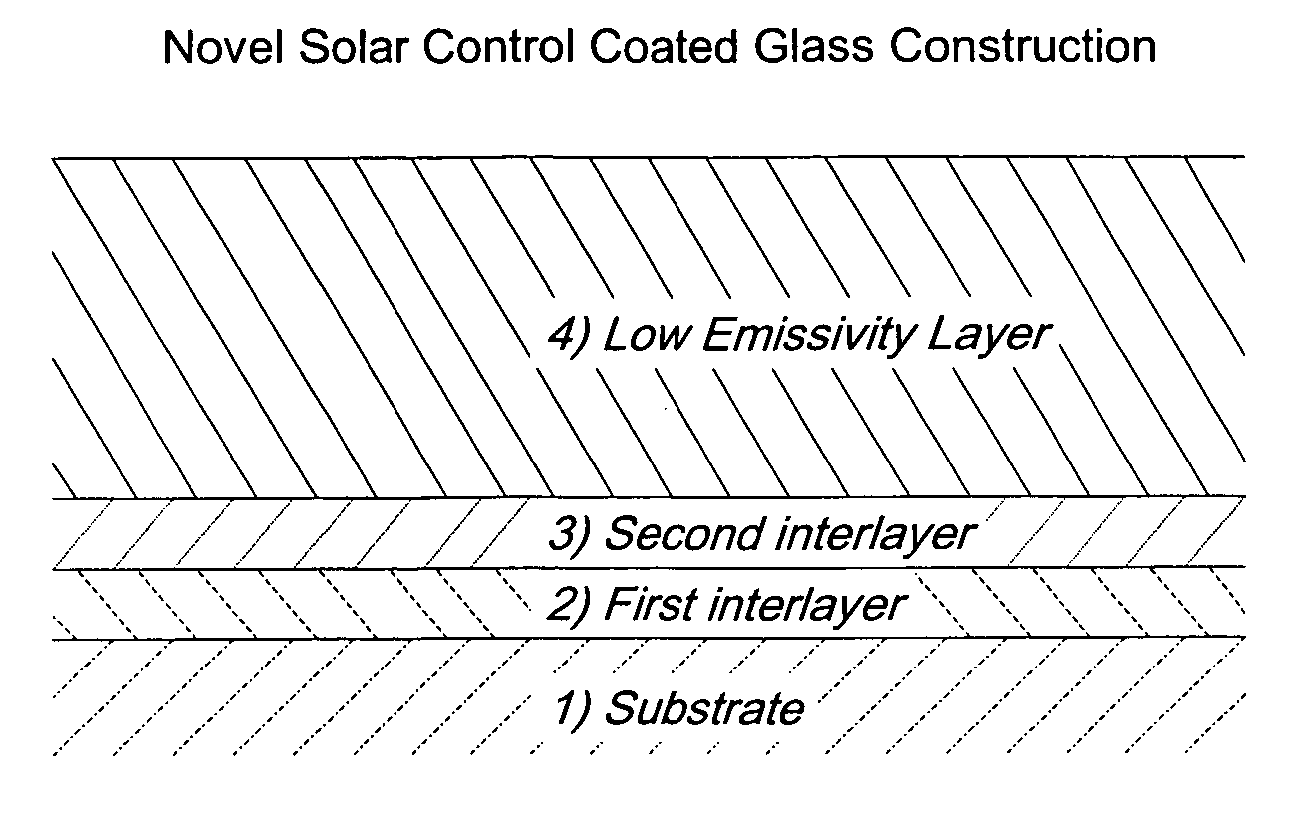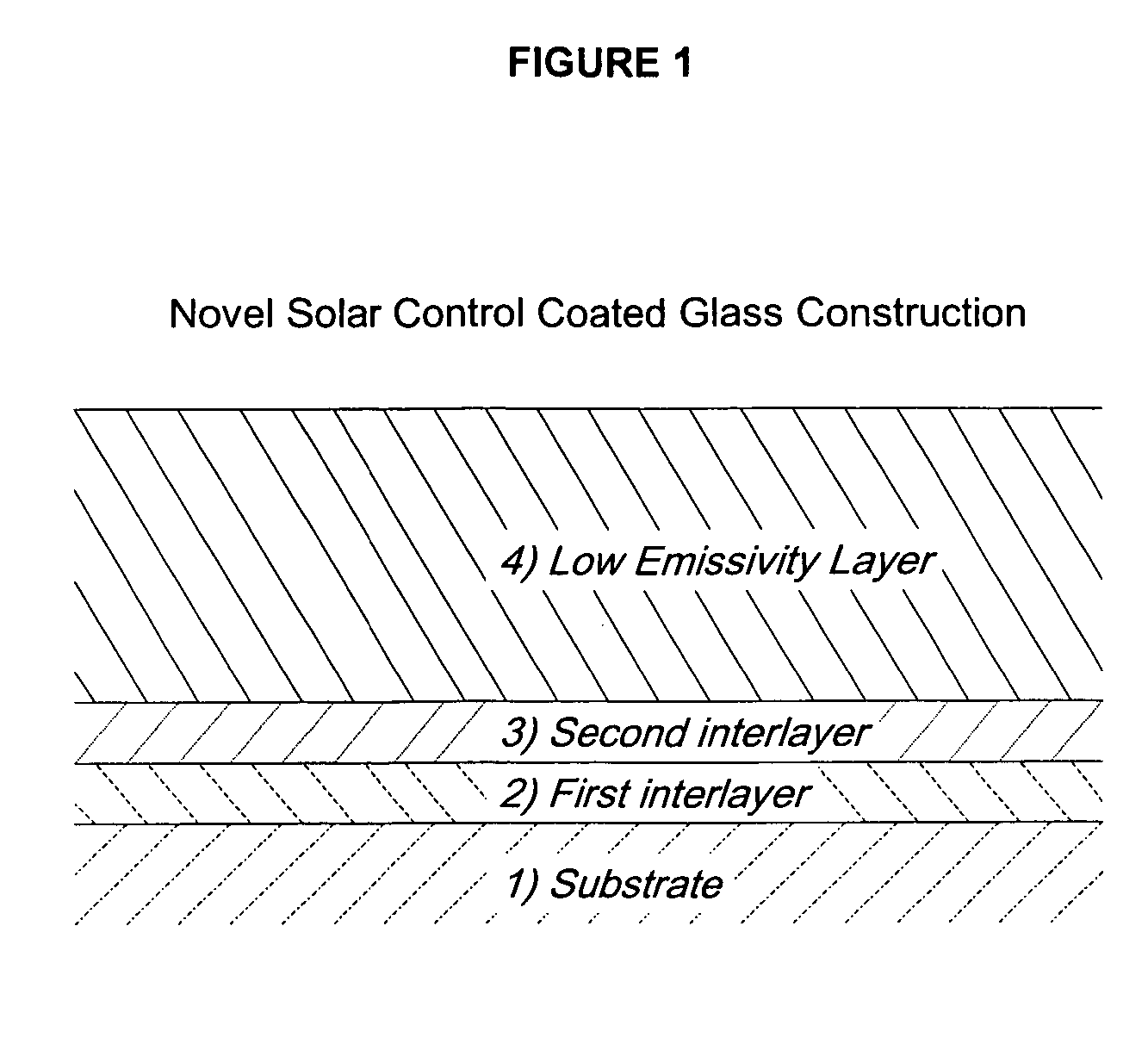Solar control coated glass composition
a technology of solar control and composition, applied in the direction of coatings, layered products, chemistry apparatus and processes, etc., can solve the problems of not meeting the performance requirements in an economic manner, interference colors (iridescence) which are visible, and objectionable iridescence in most glazing applications, etc., to achieve low haze, improve energy efficiency performance, and thin coating
- Summary
- Abstract
- Description
- Claims
- Application Information
AI Technical Summary
Benefits of technology
Problems solved by technology
Method used
Image
Examples
Embodiment Construction
[0037] The solar control coated transparent substrate composition of the present invention contains at least three distinct layers, in order from the substrate outward: a first interlayer, a second interlayer, and a low-emissivity layer. The coated substrate composition is produced by depositing the layers sequentially on a heated transparent substrate. Additional optional layers may also be present in the composition.
[0038] Energy efficiency properties applied to windows are typically expressed in terms of total solar energy transmittance (g) and thermal transmittance (U).
[0039] The first interlayer is a solar absorbing layer having a relatively high refractive index. The refractive index is in the range of 1.70 and 2.00, preferably between 1.75 and 1.90, and most preferably between 1.75 and 1.85.
[0040] The solar absorbing layer is composed of SnO2 containing a dopant. The dopant is preferably antimony although the dopant can be any element selected from the group consisting of ...
PUM
| Property | Measurement | Unit |
|---|---|---|
| optical thickness | aaaaa | aaaaa |
| refractive index | aaaaa | aaaaa |
| thickness | aaaaa | aaaaa |
Abstract
Description
Claims
Application Information
 Login to View More
Login to View More - R&D
- Intellectual Property
- Life Sciences
- Materials
- Tech Scout
- Unparalleled Data Quality
- Higher Quality Content
- 60% Fewer Hallucinations
Browse by: Latest US Patents, China's latest patents, Technical Efficacy Thesaurus, Application Domain, Technology Topic, Popular Technical Reports.
© 2025 PatSnap. All rights reserved.Legal|Privacy policy|Modern Slavery Act Transparency Statement|Sitemap|About US| Contact US: help@patsnap.com


